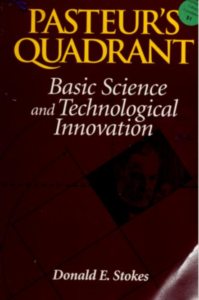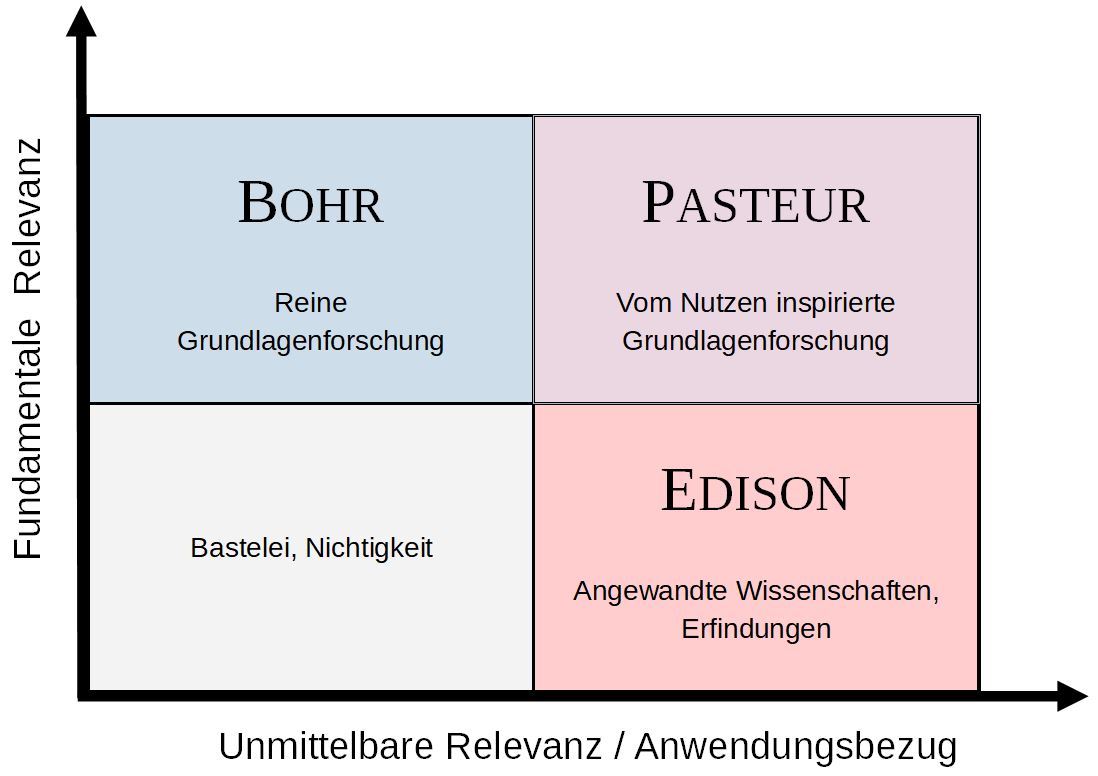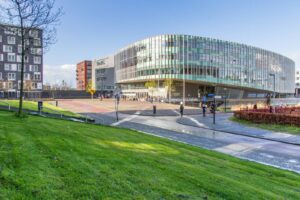In this second blog post, Marco Masia, PhD MBA looks at the research and innovation process and how it relates to impact.
Something I learned in the years after writing my proposal, is that the concept of “linear science” was introduced by Vannevar Bush in his report to the President of the USA in July 1945, in the aftermath of the second World War. Based on the success of the Manhattan Project, Bush strongly advocated for the prominent role of basic research by artificially introducing the dichotomy with applied research; the former deals with problems motivated by curiosity and understanding, and the latter with problems motivated by practical ends. Unfortunately, although a more complex framework for research has been developed in the last decades, this linear picture is still dominant in the research community.
 You might be wondering “If research is not a linear process, how does it work?”, and “How is it related to impact?”. Let me answer the first question by quoting Donald E. Stokes’ excellent book “Pasteur’s Quadrant: basic science and technological innovation”. Stokes credits Pasteur for an approach that starts by identifying important societal problems with practical implications for which there were no solutions and no relevant science like, for example, death from rabies and illness from spoiled milk. To solve these problems, Pasteur invented new fields of science and applied them. Using Pasteur’s approach, it is possible to couple the development of fundamental science with the solution of problems important to society. Use-inspired research is a clear example of a non-linear approach where the quest to solve a societal-relevant problem feeds into basic research, which feeds new knowledge back into applied research and/or development and further commercialisation/deployment.
You might be wondering “If research is not a linear process, how does it work?”, and “How is it related to impact?”. Let me answer the first question by quoting Donald E. Stokes’ excellent book “Pasteur’s Quadrant: basic science and technological innovation”. Stokes credits Pasteur for an approach that starts by identifying important societal problems with practical implications for which there were no solutions and no relevant science like, for example, death from rabies and illness from spoiled milk. To solve these problems, Pasteur invented new fields of science and applied them. Using Pasteur’s approach, it is possible to couple the development of fundamental science with the solution of problems important to society. Use-inspired research is a clear example of a non-linear approach where the quest to solve a societal-relevant problem feeds into basic research, which feeds new knowledge back into applied research and/or development and further commercialisation/deployment.
The beauty of this interpretation of research and innovation as a system where different parts are interconnected through feedback loops is that new and unexpected knowledge and applications are acquired while maximizing the benefits for society. In addition, it implies the important role of social sciences and humanities to achieve the same goal. As mentioned earlier, the acceptance, and hence the effectiveness, of new technologies (vaccines for example) can be maximized only by interventions developed by social scientists.
How is the R&I cycle related to “impact”?
I would like to clarify two aspects:
- Looking at research and innovation as a non-linear cycle does not imply that basic and applied research, development, and innovation are meaningless concepts or not relevant. They indeed constitute the backbone of the cycle and the interconnections among these parts make the cycle more effective towards tackling societal challenges.
- The research enterprise has grown in complexity since Pasteur and it is not that easy for a single researcher to identify a problem, acquire new knowledge and bring it to practical application. Nowadays, huge research networks are needed to address societal challenges. Researchers and innovators contribute to parts of the cycle; at times, it is difficult to see how one’s contribution fits into the big picture.
After this digression into the structure of research and innovation, I hope you see why thinking of one’s impact is so important. It allows one to make (unexpected) connections to real-world problems and to understand how one’s results and outcomes fit into the larger endeavour of addressing societal challenges. It brings different stakeholders from the R&I cycle closer and accelerates the deployment of new solutions that make a difference.
The small impact on an asteroid achieved by the researchers involved in the DART mission poses the basis for further developments that will protect humanity on Earth from a not-so-improbable collision with a large asteroid that might cause our extinction. It required a collaboration of scientists worldwide, the use of previous knowledge, and the development of new technology.
Biography: Dr. Marco Masia PhD MBA
Expert in Academic Entrepreneurship, Marco is a technology transfer manager at the University of Vienna. He is also the founder and managing director of MARMAS GmbH, a company working at the intersection between research, innovation, and policy. Earlier he worked as Executive Coordinator of the Initiative for Science in Europe and as Assistant Professor of Theoretical Chemistry at the University of Sassari, Italy. He has also been a board member of the Marie Curie Alumni Association. He holds a PhD in Physics (Polytechnic University of Catalonia) and an executive MBA (Frankfurt School for Finance & Management).
LINKEDIN: https://www.linkedin.com/in/mmasia
TWITTER: https://twitter.com/marmas76



